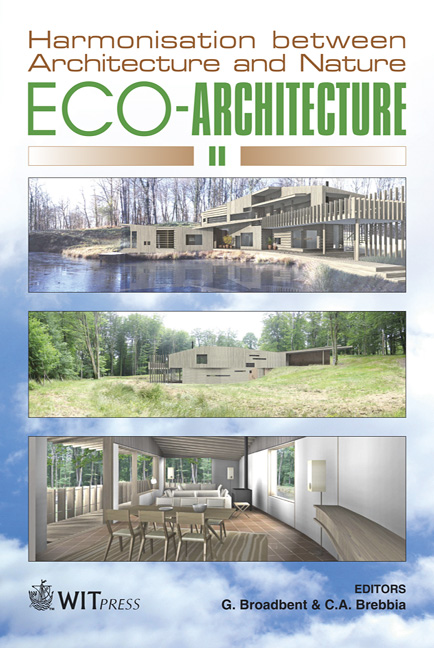The Dislocation Of Composition: Architecture And Eco-sustainability
Price
Free (open access)
Transaction
Volume
113
Pages
10
Page Range
107 - 116
Published
2008
Size
4,004 kb
Paper DOI
10.2495/ARC080111
Copyright
WIT Press
Author(s)
A. Sichenze, I. Macaione & M. I. Insetti
Abstract
This paper deals with the problem and experiences of \“ecological hetero-genesis of the ends”, within an architectural context, by defining the 40 year old trajectory of the ecological approach to architecture in a partial and critical balance based on the main results obtained. It results being a context of successes and insufficiencies from which a decisive step in the direction of a phenomenological architectural practice of eco-sustainability can be taken, through tests on both the scale of the nature-city as well as \“residential dislocation”. The paper deals with these new experiences in order to show the visions of projects and initial realisations. This research deals with the description of a phenomenological approach to design by two new procedures of direct union in relation with the beauty of sense of limit in architecture. Where the sense of limit is extended both to the availability of the resources and the concept of balance of the ecosystem in which architectures are immersed. Keywords: nature-city, phenomenology, eco-sustainability, architecture, limit. 1 Introduction Following about 40 years of planning and applications, eco-sustainability has decisively become an intentional part of architectural design and testing of new areas and urban parks aimed at the idea of the sustainable city (e.g. Vauban and Rieselfeld, Freiburg im Breisgau, Germany; Solar City, Linz, Austria; Hammarby Sjöstad, Stockholm, Sweden; 119 Houses on Hagen Island, Ypenburg, Holland; Benny Farm Reconversion, Montreal, Canada). There are no projects relating to entire eco-cities, with only China having planned 400. From the organisation of numerous exhibitions dedicated to
Keywords
nature-city, phenomenology, eco-sustainability, architecture, limit.





